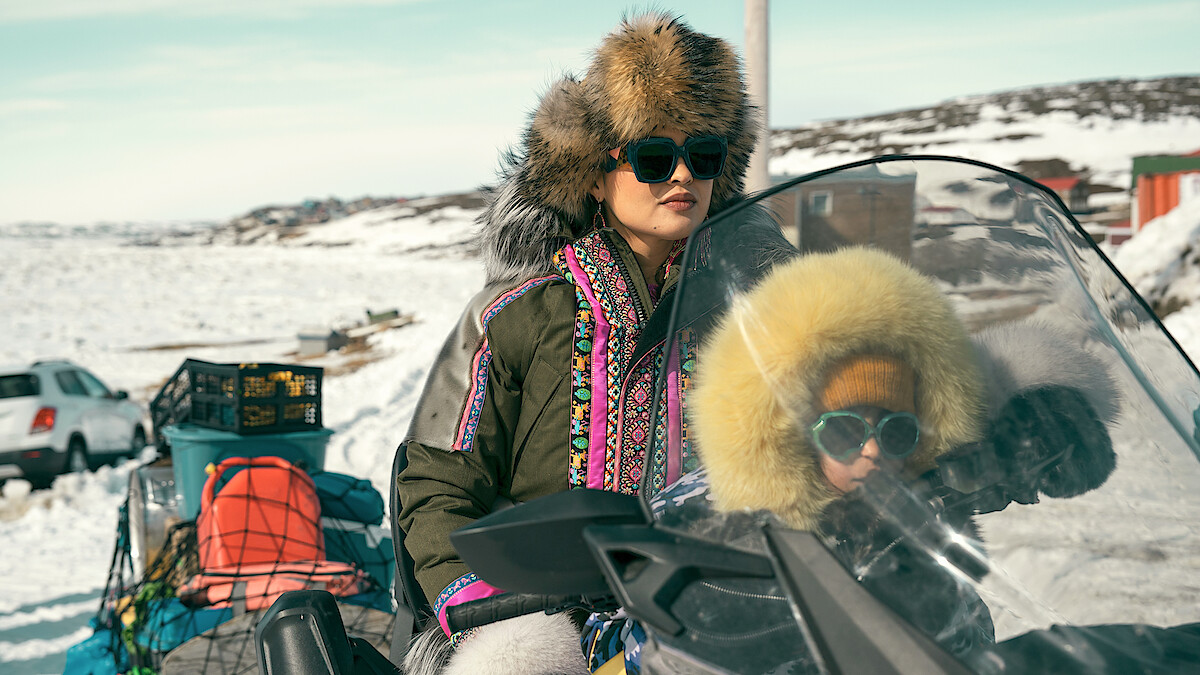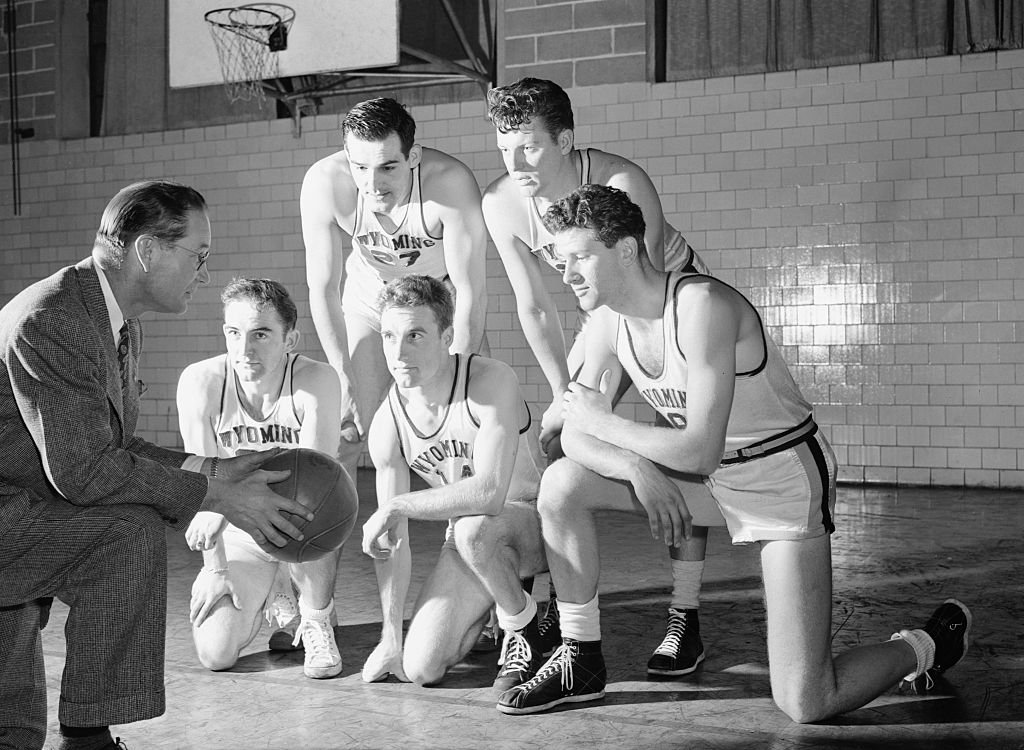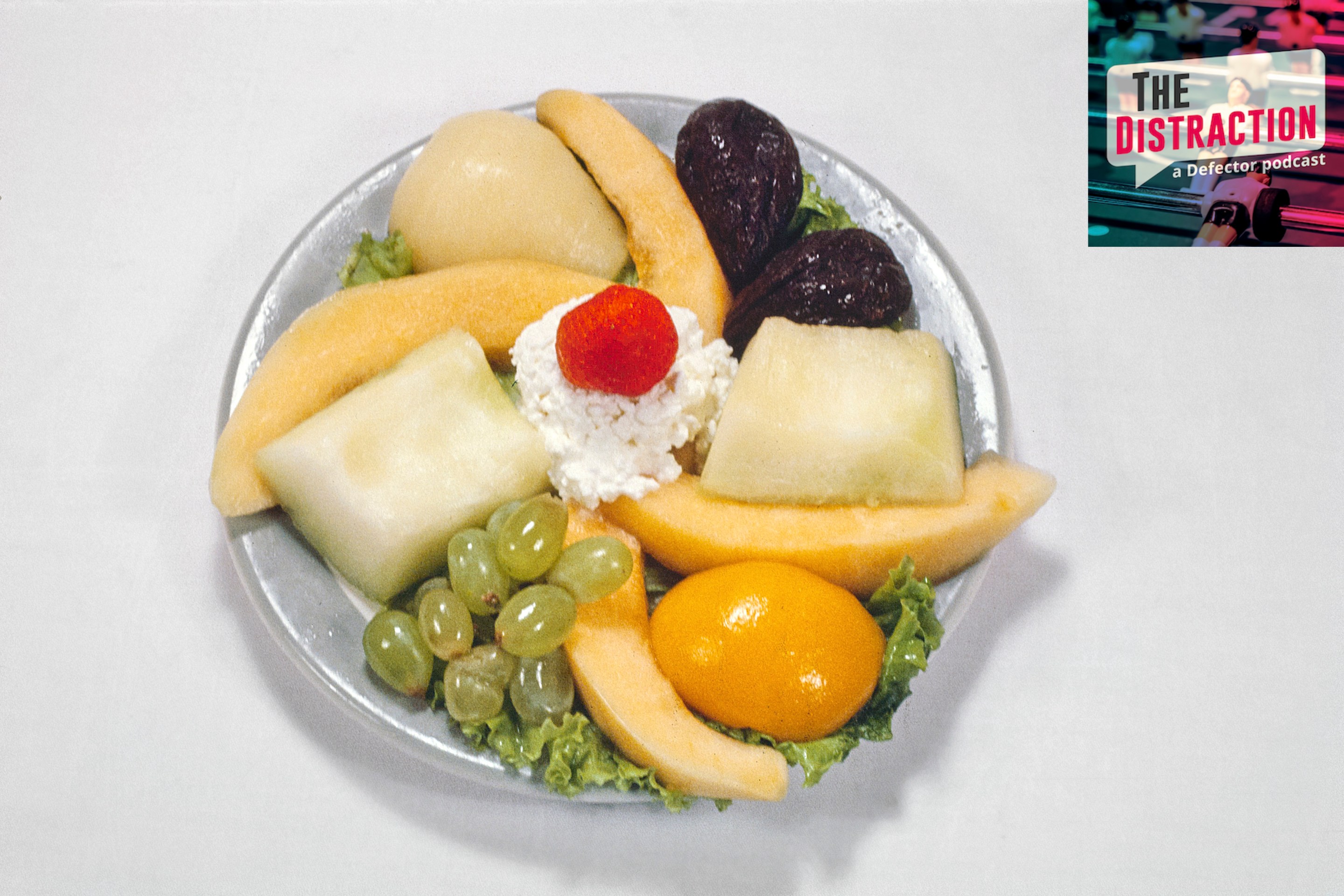“I am a modern Inuk woman,” says the actress Anna Lambe, in the opening moments of her new sitcom, North of North. “…Whatever that means.” Lambe plays Siaja, a twenty-something undergoing a quarter-life crisis in her tiny Arctic hometown: Ice Cove, a fictional place built on the realities of life in Nunavut’s two dozen far-flung hamlets.
As the pilot episode unfolds, Siaja decides that she’s spent too much time putting other people first. She was forced to self-parent during the years before her single mom, Neevee, got sober; then she married right after high school and had a daughter soon after. Now she’s a stay-at-home mother, the wife to an oblivious husband, and she desperately needs a change. Across the eight short episodes of the show’s first season, Siaja tries to remake her life—often while spinning from one awkward disaster into another.
After debuting on CBC in Canada in January, North of North landed on Netflix last week. It’s very funny, and very sweet, with the right mixture of weirdness and a little edge. (“Are you my dad?” Siaja asks her mom’s latest one-night stand during an accidental morning-after encounter, wide-eyed and seemingly earnest. Her seven-year-old daughter, Bun, joins in: “I thought Santa was my grandpa?”) It’s also an important landmark in Arctic and Indigenous storytelling. The show was created by Stacey Aglok MacDonald and Alethea Arnaquq-Baril, the Inuit filmmakers who produced Slash/Back (2022) and The Grizzlies (2018). It was filmed on location in Iqaluit, the small capital city of Nunavut, and Inuit actors make up the vast majority of the cast.
The North is a region that has so often been defined and described in media created by outsiders, from the memoirs of missionaries and self-styled explorers to wave after wave of researchers and journalists; even the closest thing North of North has to a predecessor in mainstream TV comedy, Northern Exposure, was all about an outsider who winds up in rural Alaska. So it matters to see a homegrown story being told on such a huge platform.
A few years ago, I started and then stalled out on a full rewatch of The X-Files, which I hadn’t seen since I was a teenager. I made it as far as “Ice,” the eighth episode, when Mulder and Scully travel to the remote fly-in town of Nome, Alaska, because a research team has died under mysterious circumstances.
The dealbreaker for me was this: Nome, in the Mulder-and-Scully-verse, had paved streets. The paved streets were hemmed in by curbs, and the curbs? They bordered green, grassy lawns. None of these three things feature in the Arctic and sub-Arctic fly-in towns I’ve visited over the 15 years I’ve been reporting in the North—whether in Alaska, Nunavut, or anywhere in between.
In contrast, North of North gets its world exactly right. Siaja hauls Bun around town on her mom’s janky snowmobile. Sometimes, the town dump is on fire; everyone’s parkas and earrings are always on point. Many of the Elders speak English as their second language, or not at all, and Inuktitut words are threaded throughout the show. The community radio station, a fixture in every Nunavut community I’ve visited, is at the heart of Ice Cove, and while the town’s population is overwhelmingly Inuit, the person who seems to be in charge of most official functions is a patronizing white woman named Helen. (When the residents of Ice Cove encounter their rival hamlet, in an episode called “Walrus Dick Baseball” that does indeed feature a game of baseball played with an oosik for a bat, they also encounter a rival Helen equivalent: Ellen.) Meanwhile, the airport is a reliable pick-up spot, where a rotating cast of transient white pilots, researchers, and consultants come and go. “He’s an Eski-humper,” Siaja says at one point, cutting right to the chase.
North of North will inevitably be compared to Schitt’s Creek, the most recent warm-and-wacky Canadian comedy to draw a large audience. But the show it reminds me most of is Derry Girls. Both are grounded in real places—places that have been both scrutinized by outsiders, and overlooked; mythologized, and misunderstood. Both bring their characters and settings to life with love and humor first and foremost, rather than making their pain and trauma the primary focus. In Derry Girls, the Troubles are the backdrop against which normal teenage dramas play out. In North of North, while the characters never get didactic on the subject, the colonization of the Canadian Arctic is a keenly felt reality. That history seems to lie most heavily on Siaja’s mom, Neevee, played perfectly by Maika Harper. “You’re acting like a white girl with options!” she tells Siaja sharply, in the pilot. Several episodes later, Neevee also gets the season’s most heartbreaking scene, in the show’s only discussion of Canada’s forced enrollment of generations of Indigenous children in brutally abusive residential schools.
Derry Girls felt like a love letter to a specific time and place, from someone who knew it intimately, and North of North has that same vibe. Viewers are made welcome, but are not catered to at the expense of how the show tells its story. (So, for example, you can either piece together that Ataata means “father,” or you can just let Bun’s use of the term slide by, but you won’t see a subtitle or a pause for explanations.)
I don’t mean to make it sound like homework, or health food. North of North manages, more than anything, to be a ton of fun, an unexpected delight in a bleak time. The soundtrack slaps, the lead actors are all unbearably beautiful and charming, and every character seems perfectly cast. The creators took a big swing with their walrus dick bat—and connected.






